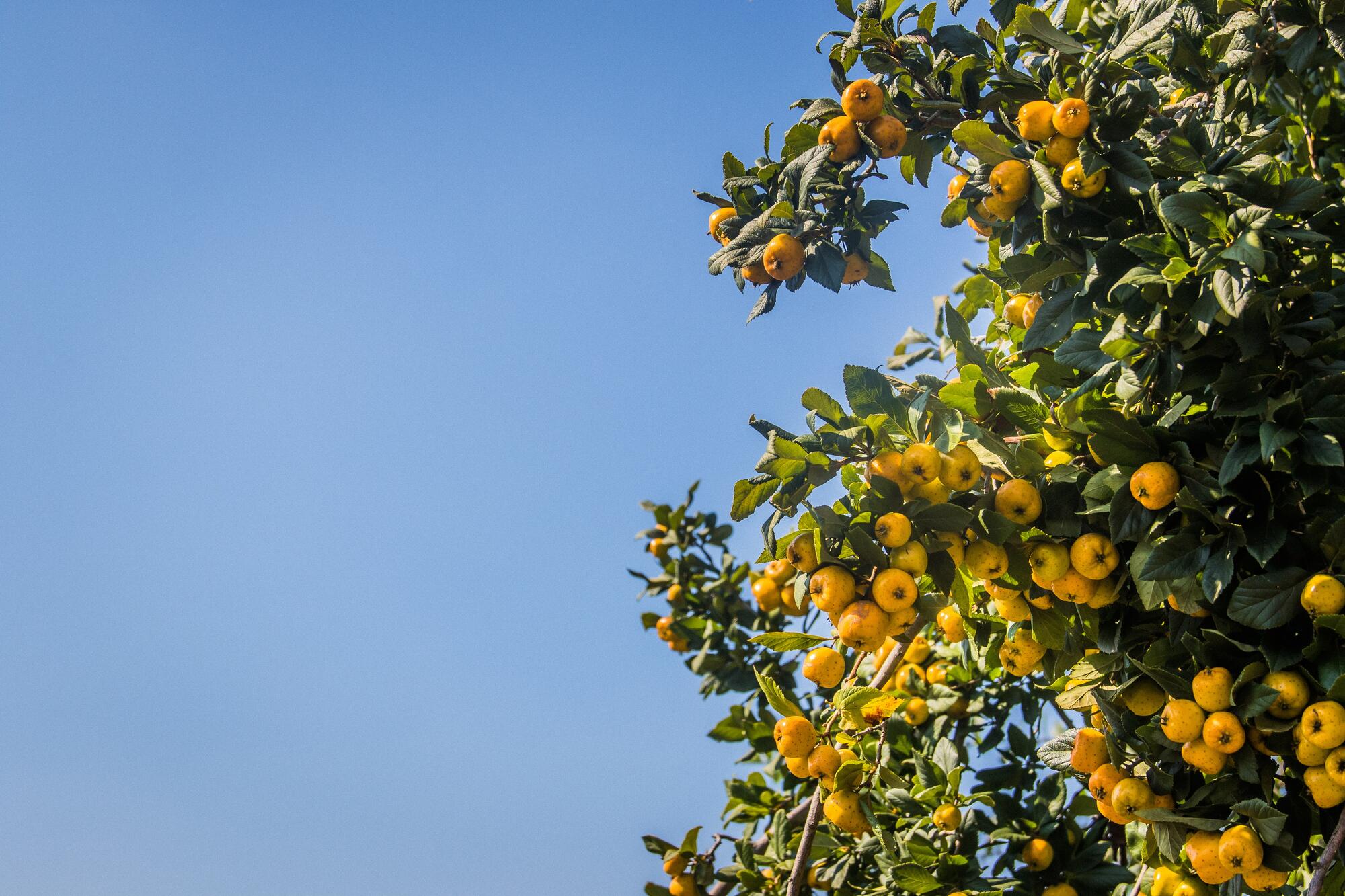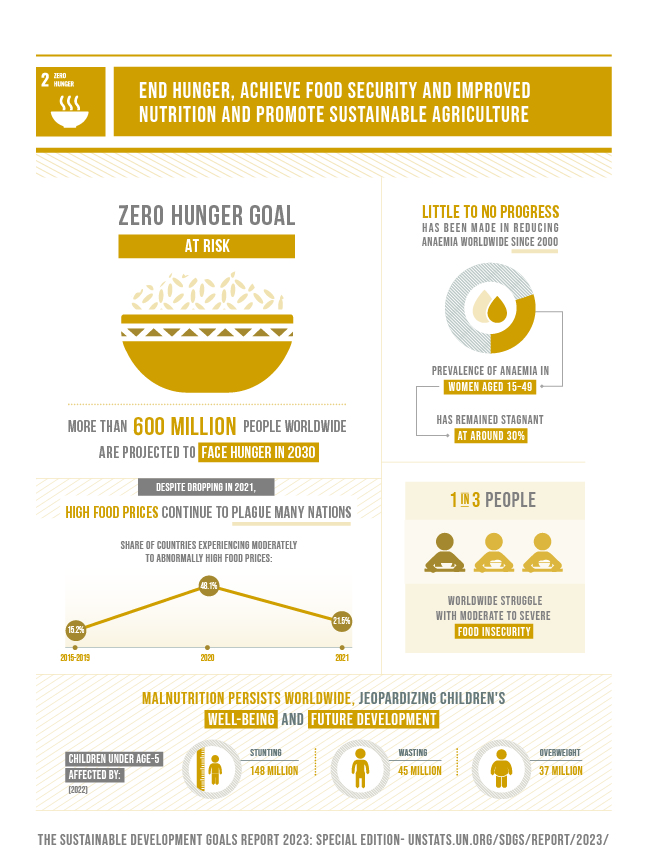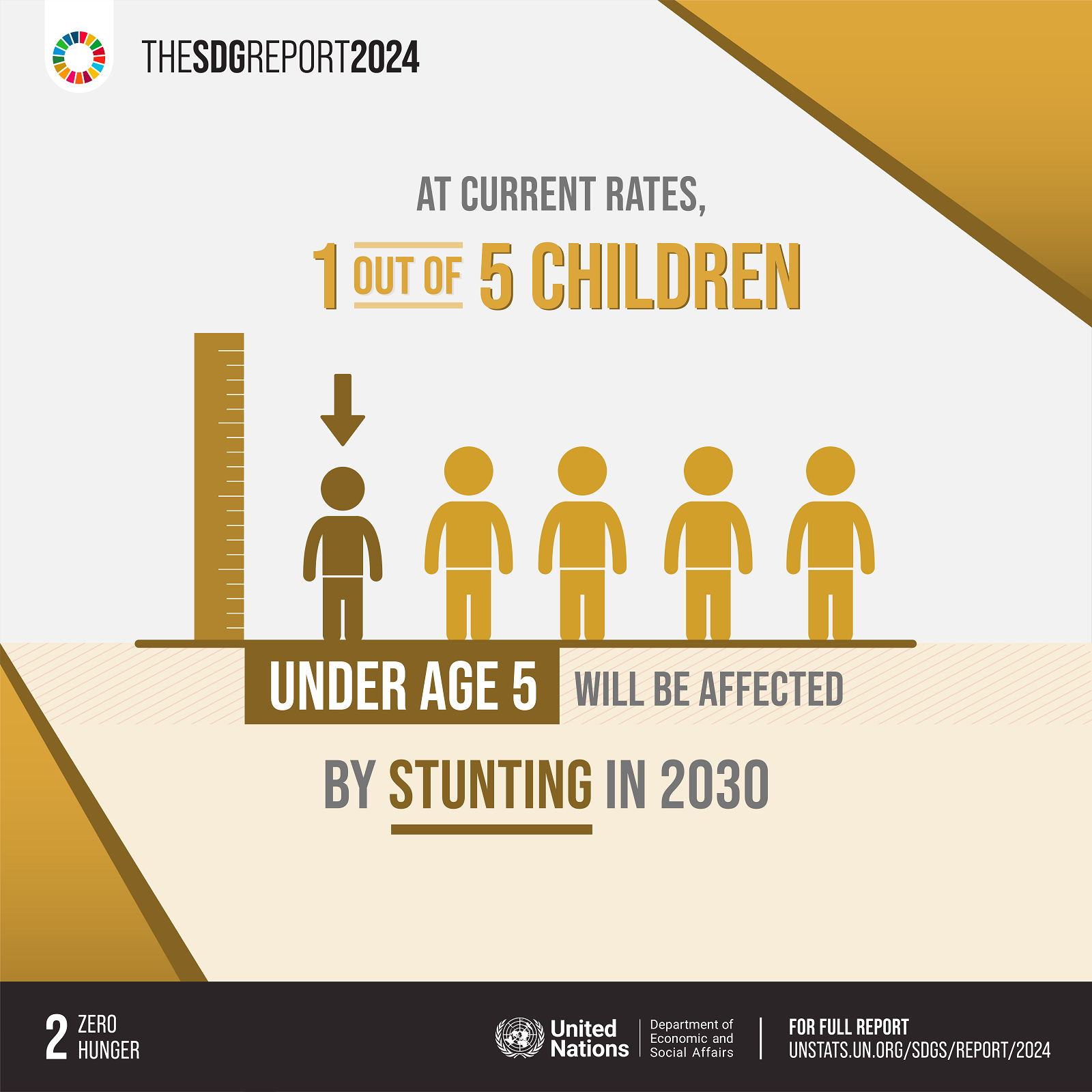
Rural Development

Food security and nutrition and sustainable agriculture
Targets and Indicators

2.1
By 2030, end hunger and ensure access by all people, in particular the poor and people in vulnerable situations, including infants, to safe, nutritious and sufficient food all year round
2.1.1
Prevalence of undernourishment
2.1.2
Prevalence of moderate or severe food insecurity in the population, based on the Food Insecurity Experience Scale (FIES)

2.2
By 2030, end all forms of malnutrition, including achieving, by 2025, the internationally agreed targets on stunting and wasting in children under 5 years of age, and address the nutritional needs of adolescent girls, pregnant and lactating women and older persons
2.2.1
Prevalence of stunting (height for age <-2 standard deviation from the median of the World Health Organization (WHO) Child Growth Standards) among children under 5 years of age
2.2.2
Prevalence of malnutrition (weight for height >+2 or <-2 standard deviation from the median of the WHO Child Growth Standards) among children under 5 years of age, by type (wasting and overweight)
2.2.3
Prevalence of anaemia in women aged 15 to 49 years, by pregnancy status (percentage)

2.3
By 2030, double the agricultural productivity and incomes of small-scale food producers, in particular women, indigenous peoples, family farmers, pastoralists and fishers, including through secure and equal access to land, other productive resources and inputs, knowledge, financial services, markets and opportunities for value addition and non-farm employment
2.3.1
Volume of production per labour unit by classes of farming/pastoral/forestry enterprise size
2.3.2
Average income of small-scale food producers, by sex and indigenous status

2.4
By 2030, ensure sustainable food production systems and implement resilient agricultural practices that increase productivity and production, that help maintain ecosystems, that strengthen capacity for adaptation to climate change, extreme weather, drought, flooding and other disasters and that progressively improve land and soil quality
2.4.1
Proportion of agricultural area under productive and sustainable agriculture

2.5
By 2020, maintain the genetic diversity of seeds, cultivated plants and farmed and domesticated animals and their related wild species, including through soundly managed and diversified seed and plant banks at the national, regional and international levels, and promote access to and fair and equitable sharing of benefits arising from the utilization of genetic resources and associated traditional knowledge, as internationally agreed
2.5.1
Number of (a) plant and (b) animal genetic resources for food and agriculture secured in either medium- or long-term conservation facilities
2.5.2
Proportion of local and transboundary breeds classified as being at risk of extinction

2.a
Increase investment, including through enhanced international cooperation, in rural infrastructure, agricultural research and extension services, technology development and plant and livestock gene banks in order to enhance agricultural productive capacity in developing countries, in particular least developed countries
2.a.1
The agriculture orientation index for government expenditures
2.a.2
Total official flows (official development assistance plus other official flows) to the agriculture sector

2.b
Correct and prevent trade restrictions and distortions in world agricultural markets, including through the parallel elimination of all forms of agricultural export subsidies and all export measures with equivalent effect, in accordance with the mandate of the Doha Development Round
2.b.1
Agricultural export subsidies

2.c
Adopt measures to ensure the proper functioning of food commodity markets and their derivatives and facilitate timely access to market information, including on food reserves, in order to help limit extreme food price volatility
2.c.1
Indicator of food price anomalies
Progress and Info
Global hunger has risen sharply since 2019 and remains persistently high. Nearly 1 in 11 people worldwide faced hunger in 2023, while more than 2 billion experienced moderate to severe food insecurity. Millions of children and women are affected by malnutrition. The number of countries in which food prices are moderately to abnormally high remains well above pre-pandemic levels. Getting progress on track with respect to Goal 2 requires urgent action to strengthen food systems, support small-scale producers, improve services and ensure access to affordable, healthy diets. Transitioning food systems to make them more sustainable, inclusive and resilient will drive progress on the Goals. The United Nations Food Systems Summit and its biennial stocktakes – the next of which is scheduled to be held in July 2025 – have helped to align global efforts with nationally defined priorities.
Target 2.1 - Hunger affected 9.1 per cent of the global population in 2023, up from 7.5 per cent in 2019 (between 713 million and 757 million people globally and one in five in Africa). Nearly 2.33 billion people, or almost 3 in 10, faced moderate or severe food insecurity in 2023, which was 383 million more than in 2019.
Target 2.2 - The global prevalence of stunting in children under the age of 5 declined from 26.4 per cent in 2012 to 23.2 per cent in 2024, but recent data indicate a potential reversal of the trend. More than 150 million children were stunted in 2024. The prevalence of overweight in children rose from 5.3 to 5.5 per cent between 2 012 and 2024, though the number of overweight children declined from 36.3 million to 35.5 million. The prevalence of wasting in children declined from 7.4 per cent in 2012 to 6.6 per cent in 2024, and the number of children affected declined from 50.9 million to 42.8 million.
Some 34 per cent of children between the ages of 6 and 23 months received minimum dietary diversity between 2015 and 2022, which represents a slight improvement from the figure of 28 per cent in the period 2009–2016. Only 65 per cent of women of childbearing age achieved minimum dietary diversity between 2019 and 2023. 30.
Little improvement has been seen since 2012 with respect to anaemia, which affected one in three women between the ages of 15 and 49 years in 2023.
Target 2.3 - In most countries for which data are available, the annual income of small-scale producers from agriculture is $1,500 (constant 2017 purchasing power parity), which is often less than half of what larger producers earn. Target 2.a 32. Global public expenditures reached $38 trillion in 2023, or 36 per cent of global GDP, of which a record $701 billion went to agriculture. Nonetheless, agriculture represented only 1.85 per cent of total government expenditure.
Target 2.c - In 2023, the proportion of countries in which food prices were moderately to abnormally high declined to about 50 per cent. This was lower than the 61 per cent recorded in 2022 but still three times the average of 16 per cent for the period 2015 –2019.

For more information, please visit: https://unstats.un.org/sdgs/report/2025/
More details on SDG 2 in 2025: https://unstats.un.org/sdgs/report/2025/Goal-02/
The 2025 Extended Report on SDG 2 can be found here: https://unstats.un.org/sdgs/report/2025/extended-report/Extended-Report-2025_Goal-2.pdf









